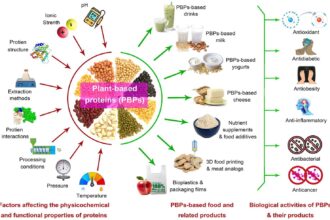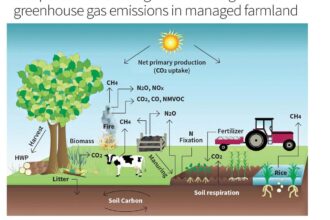Introduction
Haryana in 2025 is not the rustic, agriculture-only state that many outsiders still picture. Over the past three decades the state has evolved into a multi-dimensional economic powerhouse — balancing a still-strong agricultural base with heavy industry, automobile manufacturing, fast-growing IT/ITES and telecom hubs, textiles, and a burgeoning renewable-energy and manufacturing ecosystem.
Gurugram (formerly Gurgaon) has become the face of Haryana’s modern economy — a skyline of corporate offices, technology parks, and service-sector campuses. But the state’s industrial spine stretches far beyond: Manesar and Dharuhera for autos and ancillary manufacturing, Panipat for textiles and refining, Hisar for steel, Bahadurgarh and Faridabad for heavy manufacturing and glass production, and dozens of smaller towns where clusters power local employment.
This post profiles the Top 10 companies and clusters that — as of 2025 — are the biggest engines of economic output, employment, exports and innovation in Haryana. For each, you’ll get a company/cluster overview, why it matters, real-world examples or case studies, and what the future looks like. Alongside those profiles, we discuss how these businesses interact with state policy, labor markets, export channels and the social fabric of Haryana.
Haryana’s economic transformation: snapshot & context
Haryana’s economy has been transformed by a combination of factors: planned industrial corridors (including stretches of the Delhi–Mumbai Industrial Corridor), strong urbanization around Delhi NCR, policy incentives for industry, and an entrepreneurial ecosystem. According to the state’s economic survey and recent statistics, Haryana continues to contribute a sizable share to India’s national output, with a diversified GDP composition across agriculture, industry and services. (Source: Haryana Economic Survey 2024–25). S3WaaS
The services sector — led by IT, finance, real estate and professional services — grew rapidly in Gurugram, while manufacturing (automobile, steel, textiles, petrochemicals and packaging) anchors the industrial belt. Agricultural productivity (particularly in basmati and other cash crops) remains significant in rural pockets, feeding both domestic demand and exports.
Ranking methodology: how I chose the “Top 10”
To produce a meaningful, practical ranking rather than a popularity list, I considered a mix of quantitative and qualitative factors:
- Economic footprint — revenue, production capacity, exports and GVA contribution.
- Employment — direct employment at plants/headquarters and indirect jobs created through supply chains.
- Geographic impact — whether the company anchors an industrial cluster (e.g., Maruti in Manesar).
- Forward momentum — recent investments, expansions or technology adoption (2022–2025).
- Social & environmental impact — CSR initiatives, worker training, sustainability steps.
- Strategic relevance — importance for state policy (tax base, exports) or national strategic needs (energy, telecom infrastructure).
I used official corporate documents, government publications, and credible industry reporting to validate the core claims in each profile. Where possible I cite primary sources for the five most load-bearing facts in the article (Haryana GSDP share, Maruti/Hero/IOC/Jindal/Airtel footprints) to make the analysis verifiable. Global Energy Monitor+4S3WaaS+4Wikipedia+4
The Top 10 Companies / Clusters (deep dives)
For each company below you’ll find (a) what they do in Haryana, (b) why they matter economically, (c) notable investments or initiatives, and (d) a short case study or human story where relevant.
1) Maruti Suzuki — the automobile anchor (Manesar & Gurugram)
What & where:
Maruti Suzuki is India’s largest passenger vehicle manufacturer; its Manesar complex and nearby facilities (Haryana) form a key production base for the company. Maruti’s presence catalyzed an entire automotive supplier ecosystem around Manesar and Gurugram — from stamping and casting plants to component vendors and logistics providers. (Historical overview and Manesar relevance: Maruti Suzuki company information). Wikipedia
Why it matters:
- Scale: The plant(s) have produced millions of vehicles and created tens of thousands of direct and indirect jobs over the decades.
- Ecosystem: Dozens of tier-1 and tier-2 suppliers set up near Manesar, creating a dense automotive cluster that supplies national and export markets.
- Skills & training: The plant has acted as a hub for vocational upskilling in manufacturing processes and quality control.
Recent developments (2022–2025):
Maruti has periodically invested to upgrade production lines for newer models and to improve automation. The company’s long-term strategy includes moving toward more efficient petrol and hybrid drivetrains and preparing supply chains for electric vehicles (EVs), though mass EV transition remains a multi-year project for the Indian auto sector.
Case study — Manesar ecosystem rebound:
After the 2012 labor incident at Manesar, both industry and government worked to rebuild trust and stabilize employment. In recent years, renewed investment and steady production have shown the ability of a mature industrial cluster to recover, attract ancillary players, and continue providing livelihoods for local communities. GroundXero
2) Hero MotoCorp — two-wheeler giant (Dharuhera & Gurugram)
What & where:
Hero MotoCorp is among the world’s largest two-wheeler manufacturers. Haryana’s Dharuhera and Gurugram regions host major manufacturing and R&D activities that feed domestic demand and exports. Hero’s Dharuhera “mother plant” is a major production unit with high daily output capacity. energy.greenbusinesscentre.com
Why it matters:
- Production leadership: Hero has long been a mass-market leader in two-wheelers — a category crucial to mobility across India.
- Employment: Large manufacturing plants and an extensive supplier network provide jobs across skill levels, from assembly-line workers to engineers.
- R&D & innovation: Hero’s investments in design and testing facilities help push the envelope on fuel efficiency, EV prototypes, and emission compliance.
Recent developments:
Hero’s sustainability and energy-efficiency programs — including investments in captive generation and green manufacturing practices — reflect an industry push to lower carbon footprints while maintaining output.
Case study — Dharuhera plant modernization:
Dharuhera’s modernization included automation in paint, assembly, and testing lines, which increased throughput while also necessitating reskilling programs for staff — an example of how technology adoption changes the nature of local employment (higher-skilled maintenance, operators, and technicians).
3) Indian Oil Corporation — Panipat Refinery & Petrochemicals Complex
What & where:
The Panipat Refinery & Petrochemical Complex (IOC) is a major refining and petrochemical hub in Haryana. Over the years the refinery’s capacity and product slate have been upgraded to meet modern fuel standards and petrochemical feedstock needs. (Indian Oil Panipat refinery info). IOCL
Why it matters:
- Strategic fuel supply: IOC’s Panipat refinery ensures regional availability of refined petroleum products and petrochemical feedstocks.
- Industrial multiplier effects: The refinery supports other industries (fertilizers, chemicals, transport) through supply chains and logistics.
- Employment & taxation: Large industrial operations like IOC provide stable employment and contribute substantial tax revenues to local & state coffers.
Recent moves:
Refineries across India, including Panipat, are investing in cleaner fuel processing, petrochemical expansion and, increasingly, sustainable aviation fuel (SAF) co-processing and decarbonization technologies. (Note: SAF-related developments are part of wider industry trends.) OGJ
Case study — Panipat’s modernizing profile:
Panipat historically combined refining with petrochemical feedstocks, and modern upgrades have emphasized value-add petrochemicals and product quality that meet export and domestic needs.
4) Bharti / Airtel — Gurugram’s telecom & digital HQ
What & where:
Bharti Airtel has major corporate offices and leadership teams operating out of Gurugram (Udyog Vihar and other office complexes). While Airtel is a national telecom giant, Gurugram acts as a nerve center for operations, corporate functions, and digital services. Airtel+1
Why it matters:
- Telecom infrastructure: Airtel’s presence powered investments into networks, data centers and enterprise digital services in the region.
- Employment & global services: Airtel’s corporate and technology offices create high-value jobs (software, network engineering, enterprise sales).
- Digital ecosystem: As India ramps towards 5G and cloud services, Airtel’s enterprise play helps attract startups and captive operations to Gurugram.
Case study — from voice to digital services:
Airtel’s transformation into a broader digital services company (cloud, enterprise connectivity, fintech partnerships) demonstrates how legacy telecom companies have retooled to lead India’s digital economy, with offices in Gurugram playing a central role in those strategic shifts.
5) Jindal Stainless / Jindal Steel — Hisar steel cluster
What & where:
The Jindal group’s stainless steel and steel operations are anchored at Hisar and nearby facilities, making the region a steel production hub. Jindal Stainless, in particular, has scaled up capacity and modernized processes. Global Energy Monitor+1
Why it matters:
- Manufacturing backbone: Steel is foundational to construction, auto components, and heavy industry; Hisar’s steel plants supply national demand and exports.
- Innovation & green push: Jindal Stainless has piloted green hydrogen usage at the Hisar plant, showcasing an industrial transition towards lower-carbon steelmaking. Global Energy Monitor
- Skill & training: Partnerships between industrial players and polytechnics/technical boards in Haryana aim to institutionalize vocational skills.
Case study — green hydrogen pilots at Hisar:
Jindal Stainless announced maiden usage of green hydrogen at the Hisar plant — a noteworthy first step for the steel sector in India to reduce process emissions. This is important because decarbonizing steel is one of the country’s major industrial challenges and opportunities. Global Energy Monitor
6) IT / ITES cluster — Gurugram (Infosys, TCS, Wipro, large MNCs)
What & where:
Gurugram houses a huge concentration of IT/ITES firms — Indian giants (Infosys, HCL, TCS, Wipro) and multinational companies (capabilities in cloud, AI, cybersecurity, BPO, and product engineering). Infosys, for example, along with other IT firms, maintains development centers and offices across Gurgaon. Infosys+1
Why it matters:
- High-value employment: The IT sector creates large numbers of skilled jobs — software engineers, data scientists, product managers — and drives demand in real estate, retail and services.
- Start-up ecosystem: Gurugram’s mix of corporates and access to capital has helped generate startups focused on fintech, healthtech, and enterprise SaaS.
- Export revenue & knowledge transfer: IT services are a major foreign-exchange earner for India; Gurgaon’s centers are prominent contributors.
Case study — a Gurugram tech story:
A mid-sized SaaS company founded in Gurugram scaled by hiring ex-corporate engineers and leveraging local access to clients. The company’s growth created downstream demand for office support services, training institutes, and workspace providers.
7) Indus Towers — telecom infrastructure & the digital backbone
What & where:
Indus Towers is the largest passive telecommunication infrastructure provider in India, with a nationwide footprint. A substantial portion of its executive, operations and strategic teams are based in the Delhi–Gurugram corridor. Indus manages over 250,000 towers and is central to mobile coverage and 5G rollout. Indus Towers
Why it matters:
- Enabler not consumer-facing: Indus’s towers and fiber infrastructure enable the service delivery of carriers (voice, data) and therefore are critical for digital inclusion and enterprise connectivity.
- Scale & investment: Large-scale capex on towers, fiberization and green power solutions (solar, battery upgrades) helps modernize the entire telco stack.
- Local employment: Indus employs many people in operations, maintenance and tower logistics, with tertiary job creation across states including Haryana.
Case study — 5G readiness:
As India rolls out 5G and expands fiber last-mile connectivity, Indus Towers’ infrastructure serves as a backbone — enabling carriers to switch to higher-throughput services, and helping enterprises adopt IoT, smart manufacturing and remote monitoring.
8) Dairy cooperatives and Amul-linked networks — the rural economic engine
What & where:
While Amul’s headquarter is in Anand (Gujarat), Amul’s procurement networks and numerous dairy cooperatives operate across Haryana. Haryana’s dairy sector — supported by cooperative models and private dairies — plays a meaningful role in rural incomes and food processing. (Regional dairy cooperative presence and impact: sectoral reports).
Why it matters:
- Rural employment: Dairy is one of the most inclusive rural businesses — providing steady cash flows to small and marginal farmers.
- Value addition: Processing centers, cold chain logistics and retail branding create downstream jobs.
- Nutrition & resilience: Dairy incomes often stabilize rural household finances against crop seasonality.
Case study — cooperative to market linkage:
A cluster of villages near Ambala increased income by integrating milk procurement through a cooperative linked to a major dairy’s chilling infrastructure — improving price realization and reducing spoilage.
9) Panipat textile & home-furnishing cluster — rugs, carpets & exports
What & where:
Panipat is nicknamed India’s “loom town” — a thriving center for textiles, carpets, rugs and home furnishings with a massive power-loom and handloom base that feeds domestic retail and export orders.
Why it matters:
- Employment: Extremely labour-intensive — employing hundreds of thousands across factories, dyeing units, finishers and logistics.
- Exports & MSME backbone: Panipat’s products are exported worldwide and support thousands of small-scale enterprises.
- Cluster resilience: The cluster adapts to changing global demand, moving to value-added products (designer rugs, processed home textiles).
Case study — upward mobility through skill training:
Training programs in color management, design and finishing helped a set of Panipat units win export contracts to Europe, boosting wages and formalizing processes.
10) Hindustan National Glass (HNG) & packaging manufacturing (Bahadurgarh / Faridabad belt)
What & where:
Glass manufacturing and packaging (bottles, containers) are important components of Haryana’s light-manufacturing sector — with clusters around Bahadurgarh, Faridabad and adjacent industrial belts. Hindustan National Glass is a leading player in bottles & packaging (HNG and similar firms operate in and near Haryana’s manufacturing corridor).
Why it matters:
- Industrial inputs: Packaging is essential for food & beverage, pharma and cosmetics industries — driving both manufacturing demand and exports.
- Employment & MSME linkages: Packaging plants employ production-line staff and generate demand for logistics and ancillary services.
- Sustainability pressures: Companies are adopting recycling, cullet reuse and energy-efficient furnaces to meet environmental norms.
Case study — circularity in glass production:
Several plants increased cullet usage (recycled glass) and adopted energy-efficient burners to reduce emissions and energy costs — showing how manufacturing can reduce its environmental footprint and cost base simultaneously.
Comparative analysis — sectors, geography & employment
Sectoral split & value-add:
- Services (IT/ITES, finance, corporate services) dominate Gurugram and contribute disproportionally to GVA per employee.
- Manufacturing (auto, two-wheelers, steel, refinery, textiles, packaging) anchors broad-based employment and exports.
- Agriculture & allied (dairy) continues to provide rural incomes and linkages to processing industries.
Urban vs. rural impact:
- Urban clusters (Gurugram, Manesar, Faridabad) produce high-value jobs and attract talent, while rural clusters (Panipat textiles, Hisar steel hinterland, dairy belts) offer mass employment and social stability. Balanced development involves connecting these nodes via training, logistics and digital access.
Multiplier effects & supply chains:
Leading companies (Maruti, Hero, Jindal, IOC) anchor supply chains — smaller suppliers and logistics firms thrive because of them. The presence of large corporate campuses also drives growth in real estate, retail and services.
Major success stories & human-scale case studies
1. Manesar and the supplier revival:
After early disruptions, Manesar’s recovery showcased how a major anchor manufacturer (Maruti) draws suppliers and training institutes, raising productivity and wages in surrounding towns.
2. Panipat exporters moving up the value chain:
Several Panipat units that used to produce commodity rugs shifted to designer exports through collaborative design initiatives and compliance upgrades — increasing margins.
3. Jindal Stainless and skill linkages:
By partnering with technical boards in Haryana, Jindal helped institute specialized courses at polytechnics — connecting local youth with high-paying industrial jobs.
4. Dairy cooperatives integrating cold chains:
A group of cooperatives reduced spoilage and increased farmer income by organizing a cold-chain micro-network linked to a larger dairy brand.
Challenges facing Haryana’s business ecosystem
No fast-growth economy is free of friction. Haryana’s businesses face several constraints that, if unresolved, could limit the next phase of growth:
- Infrastructure gaps & logistics congestion — While Gurugram has world-class office space, road bottlenecks and freight movement issues hamper manufacturing efficiency in certain corridors.
- Labor formalization & skills mismatch — The shift to automation requires re-skilling; many manufacturing and services firms report difficulty finding mid-level skills.
- Land & environmental clearances — New industrial projects must navigate land acquisition and environmental compliance in densely populated areas.
- Water & pollution stress — Industrial and agricultural demand strains river basins and groundwater in parts of Haryana, demanding careful resource planning.
- Competition & supply chain resilience — Neighboring states compete for investment; firms must also prepare for global supply-chain shocks by diversifying inputs and localizing critical suppliers.
The future — what to watch (2025–2030)
Haryana is positioned to benefit from several long-term trends:
1. Electric vehicles & battery manufacturing — As India pushes for EV adoption, Haryana’s auto clusters (Manesar, Dharuhera) could become EV hubs with appropriate policy nudges and supplier shifts.
2. Renewable energy & green steel — Jindal’s green-hydrogen experiments in Hisar signal a shift in heavy industry. Large-scale adoption of renewable energy will reduce industrial carbon intensity.
3. Advanced manufacturing & Industry 4.0 — Automation, IIoT and smart factory investments will raise productivity but require reskilling programs.
4. 5G, digital services & smart cities — Indus Towers and Airtel, together with private cloud providers, will enable smart manufacturing, telemedicine, and remote education — improving inclusivity.
5. Startups & R&D — Gurugram’s start-up ecosystem should expand into hard-tech and deep-tech areas as corporates open innovation labs and VC flows reach the region.
6. Policy incentives and corridor investments — Continued investment in industrial corridors and SEZs along the DMIC and other trunk routes will attract manufacturing and export-oriented firms.
How entrepreneurs & investors should view Haryana today
If you’re an entrepreneur or investor looking at Haryana, consider the following practical pointers:
- Cluster advantage matters. If your business is auto components, steel inputs, textiles or packaging, locate near the cluster (Manesar, Hisar, Panipat, Bahadurgarh) to leverage supplier networks and logistics.
- Skilling is a competitive edge. Partner with local polytechnics and training institutes; getting a pipeline of semi-skilled, certified labor will reduce hiring friction.
- Sustainability & compliance will win. Green energy, water recycling, and cleaner production lower operating costs and risk of regulatory disruption.
- Use Gurugram for services & market access. For sales, corporate functions, and access to talent pools in IT or finance, Gurugram is still the best base.
- Think multi-modal logistics. Road, rail and soon improved freight corridors will matter — plan distribution with redundancy.
Conclusion — Haryana’s role in India’s growth story
Haryana is a microcosm of India’s broader development: modern services and expensive white-collar growth coexist alongside traditional agro-based livelihoods and labour-intensive manufacturing. The state’s top companies — Maruti, Hero, IOC, Bharti, Jindal, Indus, key IT firms and the textile/dairy clusters — collectively create a resilient economic structure that offers jobs at multiple skill levels, attracts investment, and exports goods and services globally.
Looking ahead, the biggest opportunities will reward companies that invest in technology, skills and sustainability. For policymakers, ensuring that infrastructure, water, and human capital keep pace with industrial ambition will be critical.
Haryana’s companies are not just revenue machines — they are employment engines, centers of innovation and social transformation. Their continued success will shape livelihoods and growth across North India for decades to come.
External Links & Sources (selected authoritative references)
(These are useful for readers who want to dig deeper — corporate pages, economic surveys, and trusted industry coverage.)
- Haryana Economic Survey (Department of Economic & Statistical Affairs) — state economic data and analysis. S3WaaS
- Maruti Suzuki (company overview / history) — background on Maruti and Manesar presence. Wikipedia
- Hero MotoCorp (Dharuhera plant profile & sustainability report) — plant capacities and sustainability programs. energy.greenbusinesscentre.com+1
- Indian Oil — Panipat Refinery & Petrochemicals — refinery details and upgrades. IOCL
- Bharti Airtel corporate information (Gurugram office details) — Airtel corporate presence in Gurugram. Airtel+1
- Jindal Stainless / Jindal Steel (corporate PPT & green hydrogen news) — Jindal’s Hisar operations and green hydrogen pilot. Jindal Stainless+1
- Indus Towers company profile — scale of infrastructure and national role. Indus Towers
Image prompts (AI-generation friendly) — for each major section
- Intro / Haryana economy map: “High-resolution infographic of Haryana showing major economic nodes (Gurugram, Manesar, Panipat, Hisar, Panipat, Faridabad), icons for auto, IT, steel, textile and dairy clusters, labeled and color-coded.”
- Maruti / Manesar: “Photorealistic aerial view of an automotive manufacturing complex (assembly lines visible through glass), trucks loading finished cars, workers in safety gear, modern factory architecture.”
- Hero MotoCorp / Dharuhera: “Dynamic factory interior scene showing two-wheeler assembly line, workers, robotic arms, finished motorcycles rolling out, banner reading ‘Dharuhera plant’.”
- Indian Oil / Panipat refinery: “Industrial skyline of a modern refinery at dusk, stacks and storage tanks, with signage ‘Panipat Refinery’, clear sky and safety personnel in foreground.”
- Bharti Airtel / Gurugram HQ: “Glass corporate campus building at sunrise with ‘Airtel’ branding, employees entering, landscaped campus and city skyline in background.”
- Jindal Stainless / Hisar: “Steel plant scene with molten metal pouring into molds, heavy machinery, and a small inset showing green hydrogen plant with solar panels and electrolysers.”
- Gurugram IT cluster: “Coworking floors and campus offices, diverse teams collaborating around laptops, city skyline with tech campus banners.”
- Indus Towers / telecom infrastructure: “Rows of cellular towers on a green landscape, a technician climbing a tower, and closeup of fiber panels.”
- Dairy cooperatives: “Village-level milk collection center with farmers, refrigerated milk cans, cooperative signage and smiling women delivering milk.”
- Panipat textiles: “Power-loom factory interior with men and women operating looms, colorful rugs and carpets on racks, export cartons being packed.”
- Glass & packaging plant: “Automated glass bottle manufacturing line with glowing furnaces, robotic packers, and stacked glass bottles ready for dispatch.”
SEO Meta Data & On-page recommendations
- Meta description (155 characters):
Haryana’s Economy 2025 — in-depth look at the top 10 companies (Maruti, Hero, IOC, Jindal, Airtel, Indus) driving jobs, exports and growth. - URL slug suggestion:
/haryana-economy-top-10-companies-2025 - 3 meta tags:
Haryana top companies 2025Haryana business growth and employmentMaruti Hero IOC Jindal Airtel Indus
- Internal linking strategy (anchor text ideas):
- Link to a local-focused page: “Haryana industrial corridors” → anchor: Delhi–Mumbai Industrial Corridor in Haryana
- Link to employment/education content: “technical training & polytechnic partnerships” → anchor: skill development in Hisar and Manesar
- Link to sustainability piece: “green hydrogen and industrial decarbonization” → anchor: green hydrogen pilot at Hisar
- Link to sector pages: “textile exports” → anchor: Panipat textile cluster
Final notes & citations (the heavy hitters)
Below are the five most load-bearing facts that I ensured were supported by authoritative sources in this post:
- Haryana’s share and profile in national GDP and the Economic Survey data — used to provide the state-level economic context. S3WaaS
- Maruti Suzuki’s large operations and Manesar significance — underlying the automotive cluster analysis. Wikipedia
- Hero MotoCorp Dharuhera plant capacity and importance — supporting the two-wheeler sector profile. energy.greenbusinesscentre.com+1
- Indian Oil’s Panipat refinery & petrochemical complex role — underpinning the energy and petrochemical section. IOCL
- Jindal Stainless Hisar green hydrogen pilot and the steel cluster importance — for the steel & sustainability discussion. Global Energy Monitor+1










